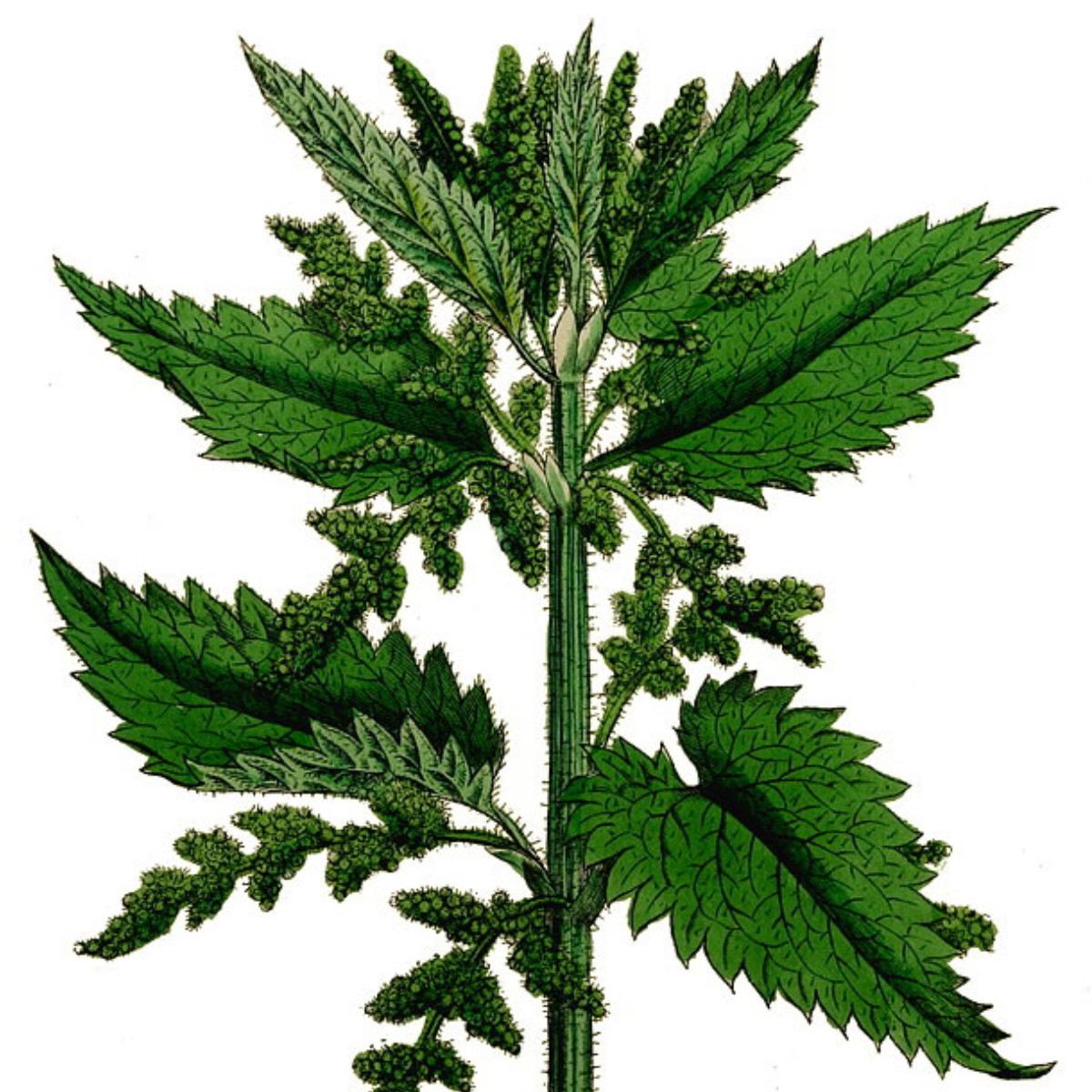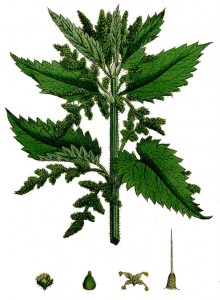Common name: Stinging Nettle
Synonyms:Urtica galeopsifolia
Family: Urticaceae
Distribution: Urtica dioica is widespread through Europe and North America, and also occurs in North Africa and parts of Asia. There are naturalised populations in several other parts of the world.
Description: This species is a herbaceous perennial, which grows as an upright plant to 1.2 m (4ft) by 1 m (3ft3in) at a fast rate in moist, shady spots, in flood plains, woodlands and along streams and river banks. The soft, serrated leaves are opposite each other in pairs on the stem. The leaves and the rest of the plant are coated in stinging and non-stinging hairs. The plant spreads by underground roots which are noticeably yellow. The tiny greenish-white flowers, each with four petals, are densely clustered on elongated inflorescences towards the top of the stem. Urtica dioica is divided into at least five subspecies, each of which is slightly different.
The Stinging nettle is most notably recognised, as its name suggests, for inflicting its painful sting when brushed by ones bare skin. However this wild herb has many medicinal and culinary uses (food, medicine, textiles, plant feed, cosmetics), and has been used by many traditional cultures for hundreds of years.
Care: Prefers a soil rich in phosphates and nitrogen. Plants must be grown in a deep rich soil if good quality fibre is required. Especially when growing in rich soils, the plant can spread vigorously and is very difficult to eradicate. It is said that cutting the plant down three times a year for three years will kill it. It is a good companion plant to grow in the orchard and amongst soft fruit. It seems to improve the health of soft fruit that grows nearby and also to protect the fruit from birds. Dioecious. Male and female plants must be grown if seed is required.
Light: Urtica dioica grows in sunny and shady habitats.
Soil: WUrtica dioica prefers a rich soil and avoiding acid soils.
Propagation: This species can be propagated by seed or by rhizome (that is an underground stem that grows horizontally) division. Abundant seed is produced and can be collected in late autumn, before frost causes seed-fall. The seed does not pass through a dormant stage and can germinate just days after maturity. Open ground is preferred for germination. Rhizome division can be carried out from spring through to late summer.
Sow Urtica dioica seeds in spring in a cold frame, only just covering the seed. Prick out the seedlings into individual pots when they are large enough to handle, and plant them out in the summer. Division succeeds at almost any time in the growing season. Very easy, plant them straight out into their permanent positions.
As a pot herb, the young leaves of Stinging nettle are very nutritious and easily digestible with high levels of vitamins and minerals. Cooked or thoroughly dried leaves are safe to eat as these processes neutralises the sting. They are a popular substitute to spinach, great addition also to soups, omelettes, and even a topping to pizza. Juicing the leaves is also a popular form of tonic and may even be applied to cuts to reduce bleeding.
The Stinging nettle in nature is a herbaceous perennial dieing down to ground level in winter. It spreads by a bright yellow rhizomatous and stoloniferous root system and may need to be controlled with a root barrier. Stinging nettle is easy to grow in any moist fertile soil, in full sun to semi-shade. Young leaves and shoots are best harvested in spring and autumn. Avoid harvesting old leaves after flowering as these become unpalatable.
Hardiness zone: 3a-10b
Begonia propagation f...
Essential Nutrients f...
Portulacaria afra
Tillandsia recurvata
Tillandsia stricta
Columnea microphylla
Clivia miniata
Cleyera japonica
Clerodendrum thomsoni...
Cleistocactus strausi...



